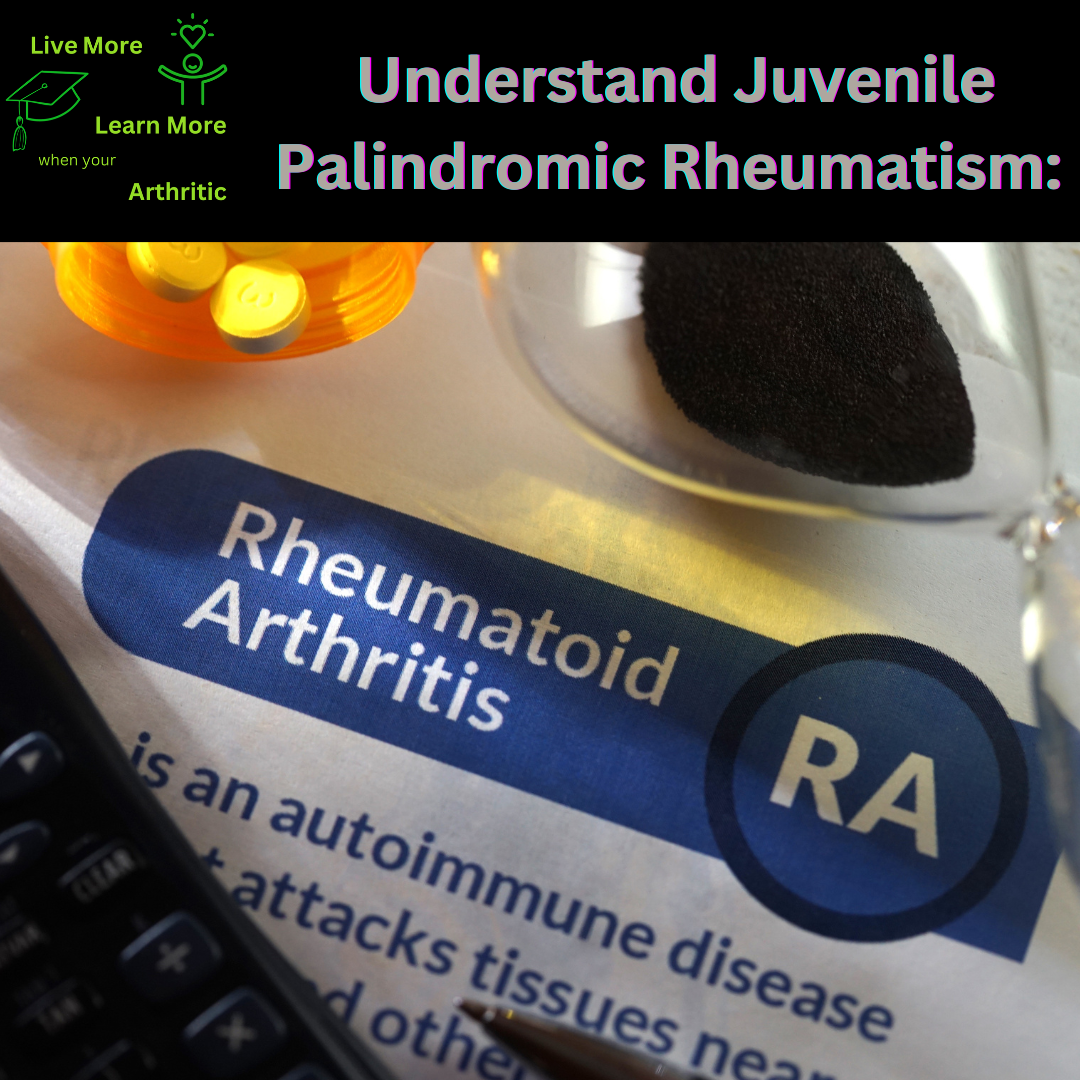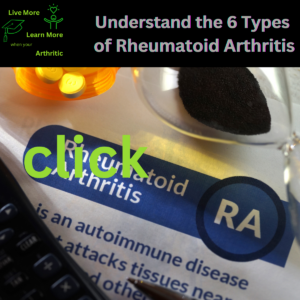
Palindromic Rheumatism: 4 of 6 Subtypes of Rheumatoid Arthritis (RA)
Exploring Juvenile Palindromic Rheumatism: An Unpredictable Journey
Palindromic Rheumatism is a rare form of inflammatory arthritis characterized by recurring episodes of joint inflammation and pain. Unlike other forms of juvenile arthritis, PR is distinguished by its episodic nature, with symptoms spontaneously resolving between flare-ups. This condition presents unique challenges and uncertainties for affected individuals and their families.
Read each of the 6 Rheumatoid Arthritis Subtypes.
6 Subtypes of Rheumatoid Arthritis
Seronegative Rheumatoid Arthritis (RA): 1 of 6 Subtypes of Rheumatoid Arthritis (RA)
Juvenile Rheumatoid Arthritis (JRA): 2 of 6 Subtypes of Rheumatoid Arthritis (RA)
Juvenile Rheumatoid Vasculitis (JRV): 3 of 6 Subtypes of Rheumatoid Arthritis (RA)
Juvenile Undifferentiated Connective Tissue Disease (UCTD): 5 of 6 Subtypes of Rheumatoid Arthritis (RA)
Juvenile Seropositive Rheumatoid Arthritis: 6 of 6 Subtypes of Rheumatoid Arthritis (RA)
And the Rheumatoid Arthritis Severity Scale
Unveiling Palindromic Rheumatism: A Dance of Symptoms and Solutions
Step into the enigmatic world of palindromic rheumatism, where joint symptoms ebb and flow like the tides. Explore the intricacies of this unique condition, its impact on the body, and avenues for proactive management.
The Body’s Symphony: Areas of Affliction
Palindromic rheumatism predominantly affects small joints, such as those in the hands and feet. Unlike typical arthritis, symptoms are transient, characterized by sudden flares of inflammation and subsequent remission.
The Elusive Remission: Patterns of Disease Activity
Can palindromic rheumatism achieve remission? Yes, periods of symptom-free intervals (remission) are possible between flare-ups. However, the unpredictable nature of the condition makes remission challenging to predict.
Deciphering the Disorder: Origins and Triggers
What causes palindromic rheumatism? The exact cause remains unclear, but autoimmune factors likely play a role. Triggers such as stress, infections, or environmental factors may precipitate flare-ups.
The Dance of Symptoms: Flares and Respite
How does palindromic rheumatism manifest? Patients experience recurrent episodes of joint pain, swelling, and stiffness, often with rapid onset and resolution. Limited range of motion may occur during flare-ups.
Onset and Longevity: Age Considerations and Prognosis
When does palindromic rheumatism typically begin? It often emerges in early to mid-adulthood, but can occur at any age. While not life-threatening, chronic inflammation may impact overall health and quality of life over time.
Autoimmune Allegiances: The Role of Immune Dysfunction
Is palindromic rheumatism autoimmune in nature? Yes, the immune system mistakenly attacks healthy tissues, leading to joint inflammation. Genetic predisposition and environmental factors contribute to disease development.
Risk Factors Unveiled: Who’s at Risk?
Who is susceptible to palindromic rheumatism? While anyone can develop the condition, individuals with a family history of autoimmune diseases or those exposed to triggers like smoking or infections may be at higher risk.
Complications Explored: Unraveling Potential Challenges
What are the complications of palindromic rheumatism? While not life-threatening, chronic inflammation may lead to joint damage and deformities over time. Recurrent flare-ups can impact daily activities and quality of life.
The Swelling Saga: Inflammation and its Impact
Is swelling a hallmark of palindromic rheumatism? Yes, inflammation within affected joints causes swelling, pain, and tenderness during flare-ups.
Joint Tenderness and Dysfunction: Understanding Symptoms
Does joint tenderness accompany palindromic rheumatism? Absolutely. Inflammation irritates nerve endings, resulting in pain and stiffness that can limit mobility and range of motion.
Cartilage Concerns: Effects on Joint Integrity
How does palindromic rheumatism affect cartilage? Chronic inflammation can erode cartilage over time, leading to joint damage and potential disability.
Comorbidity Complexities: Interconnected Health Realities
Are there related conditions to be aware of? Palindromic rheumatism may precede or coexist with other autoimmune diseases like rheumatoid arthritis or systemic lupus erythematosus, necessitating comprehensive evaluation and management.
Embracing Proactive Strategies: Enhancing Quality of Life
Can a proactive approach improve life with palindromic rheumatism? Yes. Regular monitoring, lifestyle modifications, stress management, and early treatment of flare-ups can optimize outcomes and preserve joint function.
Complications Chronicled: Anticipating and Addressing Challenges
What complications arise from untreated palindromic rheumatism? Joint deformities, functional limitations, and decreased quality of life may result from ongoing inflammation and joint damage.
Demographic Dimensions: Age and Gender Dynamics
Who is most affected by palindromic rheumatism? It often affects adults between 30 and 50 years old, with no clear gender predominance. Genetic and environmental factors influence disease onset and severity.
Interconnected Health Realities: Recognizing Coexisting Conditions
Are there associated diseases to consider? Patients with palindromic rheumatism may develop rheumatoid arthritis or other autoimmune conditions, highlighting the need for comprehensive medical evaluation and holistic care.
In conclusion, while palindromic rheumatism poses unique challenges, proactive management and personalized interventions can optimize quality of life and mitigate complications. Each step towards understanding and proactive intervention offers hope and resilience in the face of autoimmune complexities, illuminating pathways towards health restoration and renewed vitality.


